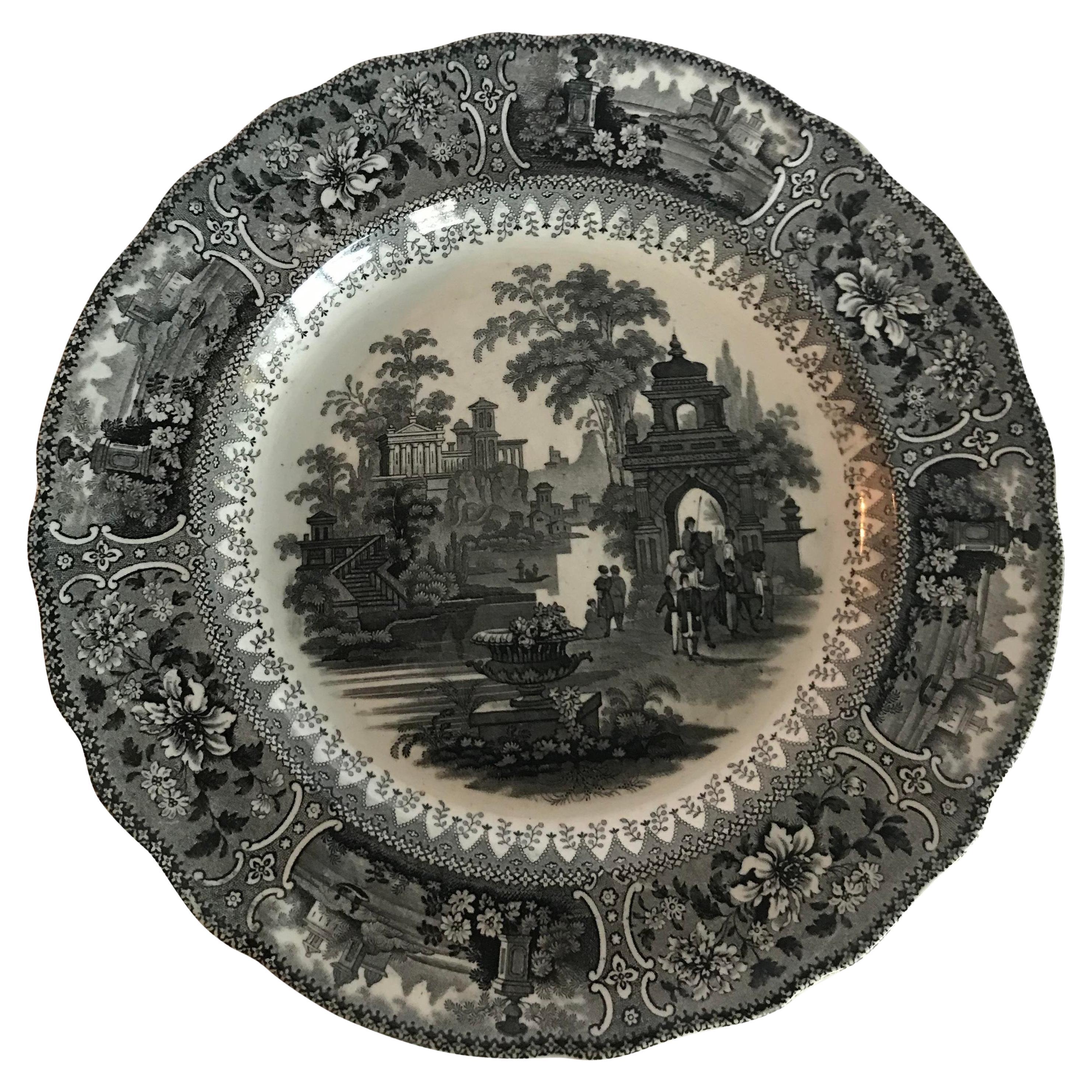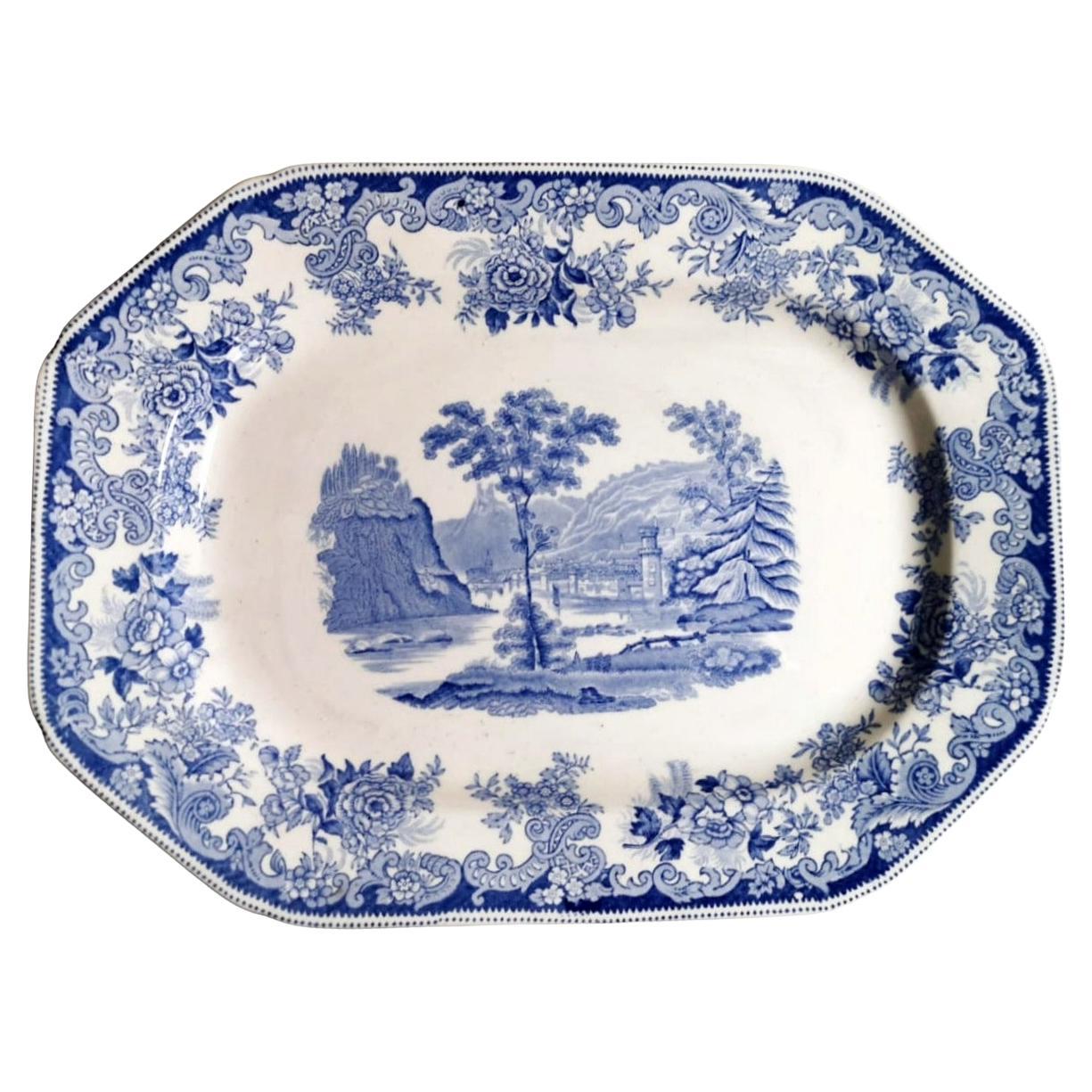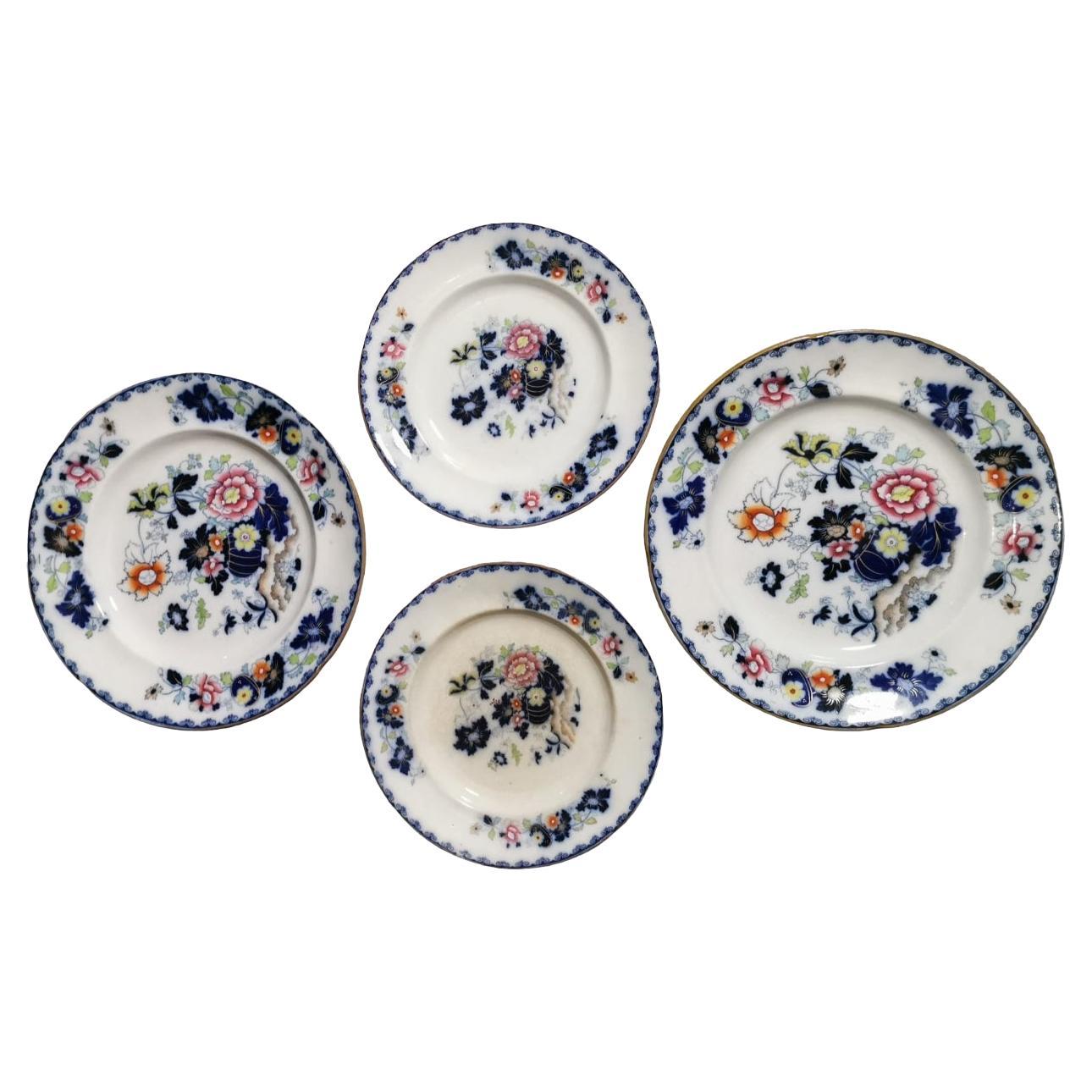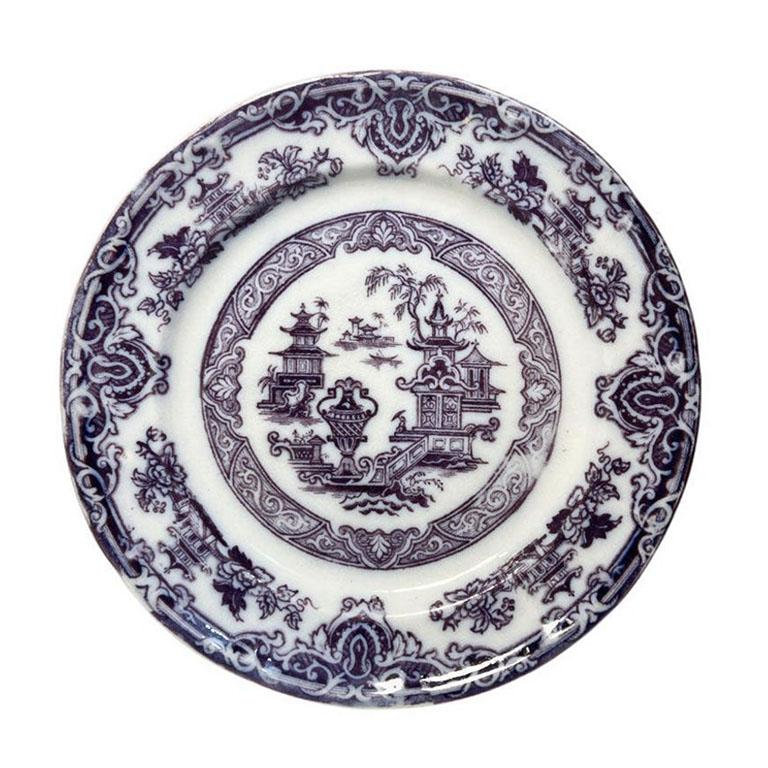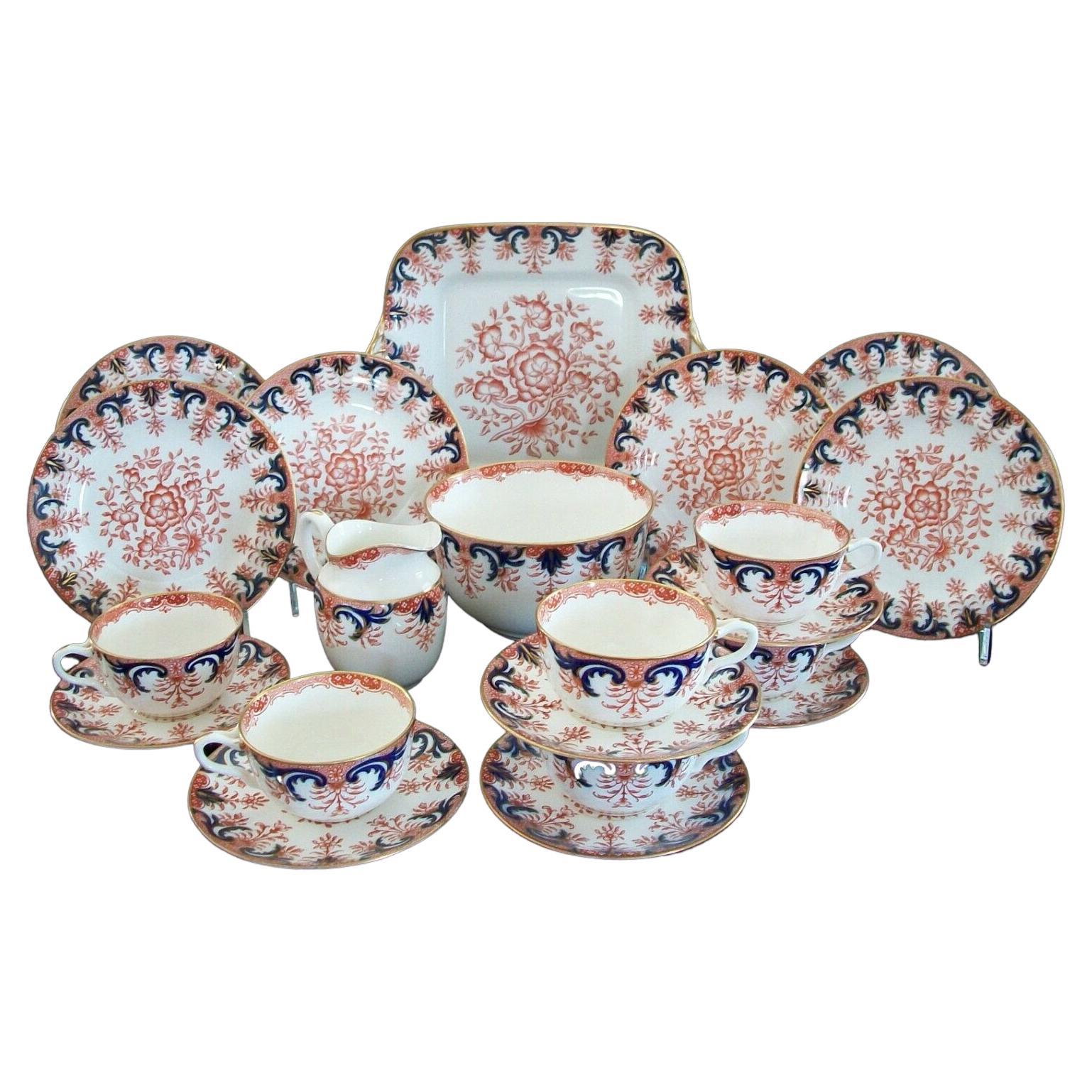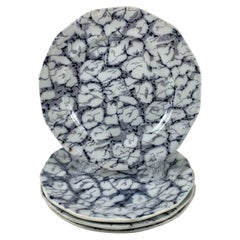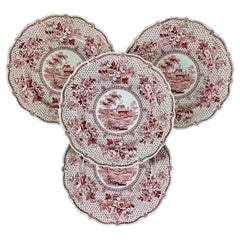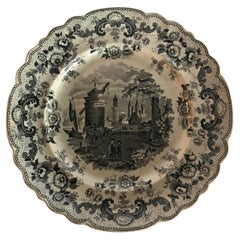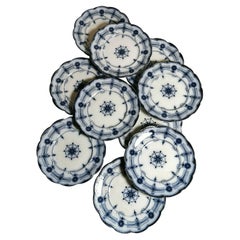
J&R Riley Blue & White Historical Transferware Cup Plate, Denton Park Yorkshire
View Similar Items
Want more images or videos?
Request additional images or videos from the seller
1 of 6
J&R Riley Blue & White Historical Transferware Cup Plate, Denton Park Yorkshire
About the Item
- Creator:J&R Riley (Maker)
- Dimensions:Height: 0.5 in (1.27 cm)Diameter: 3.75 in (9.53 cm)
- Style:Georgian (Of the Period)
- Materials and Techniques:Earthenware,Glazed
- Place of Origin:
- Period:
- Date of Manufacture:1810-1828
- Condition:Wear consistent with age and use. Excellent antique condition.
- Seller Location:Philadelphia, PA
- Reference Number:1stDibs: LU175826938163
About the Seller
5.0
Platinum Seller
These expertly vetted sellers are 1stDibs' most experienced sellers and are rated highest by our customers.
Established in 1988
1stDibs seller since 2015
549 sales on 1stDibs
More From This SellerView All
- Black and White Transferware Marble or Cracked Ice Ironstone Plates, Set of 4Located in Philadelphia, PAA set of four early 19th Century English Ironstone, twelve sided plates in a ‘Marble’ pattern, sometimes called ‘Cracked Ice.’ A tissue printed sheet pattern, applied under the glaze...Category
Antique Early 19th Century English Georgian Dinner Plates
MaterialsIronstone
- Josiah Spode 'Bridge of Lucano' Blue Transferware Dinner Plates Circa 1820 Set/6By Josiah SpodeLocated in Philadelphia, PAA set of six ‘Lucano’ or ‘Bridge of Lucano’ pattern dinner plates, Spode, Stoke-on-Trent, Staffordshire England, Circa, 1820-1830 Blue on white transfer printed earthenware, showing an Italian scene of a four-arch bridge, a round stone tower, cows in the foreground, and other buildings on a hillside in the distance. The central scene is bordered with leafy branches of olives, grape vines, and heads of wheat. A dense pattern, printed in a deep blue. Pictured here is the original source print Spode used...Category
Antique Early 19th Century English Neoclassical Dinner Plates
MaterialsEarthenware
- English Ralph Stevenson ‘Windsor Castle’ Red Transferware Dinner Plates, set/4By Ralph StevensonLocated in Philadelphia, PAA set of four British Romantic themed transfer printed dinner plates in the pattern known as ‘Windsor Castle.’ Made by Ralph Stevenson & Son, Cobridge, Staffordshire, England, circa ...Category
Antique Early 19th Century English Georgian Dinner Plates
MaterialsEarthenware
- Ralph Stevenson Pink Transferware Dinner Plates, Cologne Pattern, Set of 8By Ralph StevensonLocated in Philadelphia, PAA set of eight transfer printed plates, the Cologne pattern, Ralph Stevenson & Son, Coleridge, Staffordshire England, circa 1810-1835. A soft pink on white, the scalloped rimmed p...Category
Antique Early 19th Century English Georgian Dinner Plates
MaterialsEarthenware
- English Transferware Franklins Motto Plate, Diligence is the Mother of Good LuckLocated in Philadelphia, PAAn early 19th century Staffordshire transferware cup plate with a source print from Benjamin Franklin's "Poor Richard’s Way to Wealth.” The motto reads, “Diligence is the Mother of Good Luck. Now I have a sheep and a cow everybody bids me a good morrow.” The scene shows a man with his arm on a cow, conversing with a man on his horse tipping his hat in greeting. Sheep lie in the foreground, a house stands in the distance. A black transfer printed on an earthenware body with a molded rim and a double daisy border. The pattern is illustrated and discussed in “Gifts for Good Children: the History of Children’s China...Category
Antique Early 19th Century English Georgian Pottery
MaterialsEarthenware
- Samuel Alcock Mask & Ivy Cobalt Blue & Green Majolica Pitcher, England, 1875By Samuel Alcock & Co.Located in Philadelphia, PAA rarely found English Majolica mask handled and climbing Ivy water pitcher, marked Samuel Alcock & Co. circa 1875. A round bellied cobalt blue body ...Category
Antique 1870s English Aesthetic Movement Ceramics
MaterialsEarthenware
You May Also Like
- Antique Decorative Transferware PlateLocated in Charlottesville, VATransferware plate featuring a traditional scene. A beautiful decorative accent! Perfect for your cabinet.Category
Antique Mid-19th Century British Ceramics
MaterialsCeramic
- Traditional Decorative Transferware PlateLocated in Charlottesville, VATransferware plate with a traditional scene. A great decorative piece! Perfect for your cabinet or wallCategory
Antique Mid-19th Century British Ceramics
MaterialsCeramic
- Wedgwood 10 English Dessert Plates Design "Burleigh" Blue Transferware DecorBy WedgwoodLocated in Prato, TuscanyWe kindly suggest you read the whole description, because with it we try to give you detailed technical and historical information to guarantee the authenticity of our objects. An e...Category
Early 20th Century British Victorian Ceramics
MaterialsCeramic
- Cup White and Light BlueBy Sigrid VoldersLocated in MARSEILLE, FRCup White Clay Light Blue Sheer Glaze Ø 7cm, H: 5cm Unique piece made in Belgium - 2021Category
2010s Belgian Organic Modern Ceramics
MaterialsCeramic, Clay
- Riley Coffee Cup, Gilt Chevron Zigzag Pattern, Regency, circa 1815By J&R RileyLocated in London, GBThis is a beautiful coffee cup and saucer made by Riley in about 1815, decorated in a striking gilt chevron pattern with a rather psychedelic zigzag effect. The John & Richard Ril...Category
Antique 1810s English Regency Porcelain
MaterialsPorcelain
$256 Sale Price / set20% OffFree Shipping - Staffordshire Potteries English Tray with Blue Transferware DecorationsBy Clementson BrothersLocated in Prato, TuscanyWe kindly suggest you read the whole description, because with it we try to give you detailed technical and historical information to guarantee the authenticity of our objects. Lovely and refined English oval ceramic tray; elegant and rich blue decorations have been executed on the white background using the transferware method; the mark on the back tells us exactly that the object was produced by the Clementson Brothers LTD Company between 1901 and 1913 at the Phoenix factory in Shelton, the company made a wide range of objects with this decoration called "Delf" ( see mark no.909 p.150 of "Encyclopaedia of British Pottery and Porcelain Mark"). Transferware, which was very fashionable in the Victorian period, refers to glazed and decorated pottery with a specific treatment that they produced in Staffordshire, England; they used copper plates on which the design was engraved, the plate was then inked and the design transferred to a special fabric that was later placed on the pottery (plates, trays, tureens, etc.) which was glazed and fired; the first to use this printing process were John Sadler and Guy Green of Liverpool in 1756. If we look at the pottery made by this method we will notice that the designs are not perfect and often the ink is smudged: this is their characteristic. A hand-painted plate service could afford few English families, with this method even middle-class families could have a decorated plate service. The Clementson Firm was founded in 1839 by Joseph Clementson, who retired from the business in 1867, leaving the factory to his four sons and son...Category
Early 20th Century British Victorian Ceramics
MaterialsCeramic
Recently Viewed
View AllMore Ways To Browse
Blue White Transferware
Blue And White Transferware
Pearlware Blue And White
Antique Blue And White Transferware
Used Furniture Denton
Staffordshire Cup Plate
Deer Cup
Staffordshire Deer
Supper Set
Antique Ceramic Rabbits
Antique Ceramic Rabbit
Vintage Clarice Cliff
Antique Rose Canton China
Kh Wurtz
Nymolle Bjorn Wiinblad
Rorstrand Figure
Antique Islamic Tiles
Vintage Italian Pottery Fruit

